This little chunk of crystalline metal is a tiny slice of a meteorite — a rock that fell from the sky. When one says that, the next natural question is, “how do you know it’s a meteorite?” (We will get to that.) But what is really staggering is not just that we know, but how much we know about it and its history. And what a long history it is.
This specimen is a 68 gram sample cut from a fragment of the Muonionalusta meteorite. According to our best current understanding, the parent body that Muonionalusta came from was one of the earliest bodies to take shape during the formation of our solar system. It began as a protoplanet (or planetisimal) that accreted within the protoplanetary disk that would eventually become our solar system. It accreted over the course of roughly the first million years after the beginning or our solar system. (That is to say, during the first million years after the very first solids condensed from the protoplanetary disk.) The parent body had an iron-nickel “planetary” core, 50–110 km in radius, that was eventually exposed by collisions that stripped away most of its insulating mantle. It cooled very slowly over the next 1-2 million years. It is estimated (with startling precision) by Pb-Pb dating that the body crossed below a temperature of ~300 °C at 4565.3 ± 0.1 million years ago, just 2-3 million years after the solar system began to form. For the next four billion years, it led a largely unremarkable existence as an asteroid (minor planet) until it broke apart (possibly due to a major collision) about 400 million years ago. Then, one fine day roughly one million years ago, a large fragment entered the earth’s atmosphere, breaking into hundreds (perhaps, thousands) of smaller fragments that rained down in a shower of fire upon what is now northern Sweden and Finland. Four ice ages transported the surviving meteorite fragments across the Swedish tundra, until their first discovery (and naming after the nearby Muonio river) in 1906.
But, how do we know all of that?
The Widmanstätten Pattern
The first piece of the puzzle is the crystalline structure of the material itself. Meteorites fall into a few broad categories including iron meteorites, stone meteorites (the most common kind), and interesting mixtures between the two.
Iron meteorites are composed of iron-nickel alloys, and some, like this one, display a curious feature called a Widmanstätten pattern. A Widmanstätten pattern is comprised of intersecting lamellae (bands) of kamacite and taenite — two nickel-iron minerals with different nickel-iron ratios. These crystals formed in the material when it was cooling through the “dark red hot” temperature range. The size of the lamellae depends strongly on how slowly the material cooled through that temperature range. In order to form macroscopic lamellae like these, the material had to be cooling at a rate in the range of 100 – 6600 °C per million years. (Reference). These conditions have existed only very rarely on Earth and cannot be created in a laboratory. In fact, about the only imaginable conditions that would create large masses of red-hot nickel-iron alloys that cooled at a rate of order one degree per millennium would be the core of a small protoplanet. (It couldn’t be the core of a large planet; Earths’ own core is cooling at a rate of ~100 °C per billion years!)
While the vast majority of meteorites do not exhibit a Widmanstätten pattern (because they are stone meteorites, too rich or poor in nickel, or cooled at the wrong rate), the presence of a macroscopic pattern is one of the easiest ways to be sure (at least beyond a reasonable doubt) that a given object is indeed a meteorite.
Although the crystal pattern looks “triangular” from the side, iron meteorites with a Widmanstätten pattern are octahedrites, as the crystal structure forms along planes parallel to the faces of an octahedron. (There are four unique orientations, as opposite faces of an octahedron are parallel.) Let’s look at a common example of an octahedron for reference:
In our sample, you can easily pick out three of the four planes, by tracing bands from the edges of the “triangles” on the top surface down over the corners. Less obvious is that the fourth plane is approximately parallel to the top surface. The “gray areas” on the top surface that appear to lack lamellae are actually places where the surface has been cut right through the center of one of the lamellae.
Because the crystal structure is three dimensional, a cut from a different direction might yield a very different looking Widmanstätten pattern. Noting that an octahedron is like two pyramids stuck together, imagine cutting the “cap” off of one of the pyramids of Egypt. The planes that are cut meet at right angles, and thus if this meteorite were cut from a different angle, one would see the bands meet in a 90° grid, rather than in a set of equilateral triangles.
It is worth noting that even if the Widmanstätten pattern is present in a meteorite, the bands are not immediately visible if you simply slice into it. A cut and polished section of iron meteorite looks like any other piece of polished metal until you etch the surface to reveal the crystalline pattern. In some cases, terrestrial weathering performs the same “etching” function, allowing one to even see the bands on the exterior of the meteorite.
Tracing and dating the parent body
While traditionally iron meteorites were categorized and grouped by the size of their (or lack of) Widmanstätten patterns, modern analysis now groups them by their chemical properties including proportions of trace elements such as gallium, germanium, and iridium. The data clusters together into 12 groups, each of which represents a distinct parent body and the meteorites that came from it. A 13th group of meteorites (about 15% of the total) represents meteorites that came from all other parent bodies. This is remarkable — of all iron meteorites that fall to Earth, we can trace upwards of 85% of them to the particular parent body (planetisimal) that they came from.
Muonionalusta is a “group IVA” (roman numeral 4A) meteorite, and its parent body is generally referred to simply as the “IVA parent body.” Examining samples of group IVA meteorites from all over the world — notably including the famous Gibeon meteorite — begins to tell a story not just about an individual meteorite, but about that parent body and its characteristics. The distribution of widths of the Widmanstätten patterns in group IVA meteorites gives the distribution of cooling rates in the parent body, which is one of the factors needed to calculate the size of that parent body when it was cooling.
But this, of course, is only the tip of the iceberg. Radiological dating (particularly lead-lead dating) tells us not how fast but when it cooled, and cosmic ray exposure data tells us about how the body broke apart 400 million years ago.
Yep, it’s really old.
If you should happen to pick up a piece of this material, it’s likely the oldest thing that you’ll ever touch. It’s a piece of the oldest known “differentiated body” in our solar system.
It is not quite the oldest known solid matter in our solar system. That honor belongs to certain meteorites called carbonaceous chondrites that contain inclusions (up to 4.568 billion years old) of those very first grains to accrete within the presolar nebula that would eventually become our solar system. None the less, it does date to within several million years of the formation of our solar system, and is older than the earth itself. (Aside: Earth is generally regarded to be ~4.55 billion years old. An exact date is hard to nail down, since Earth likely accreted from smaller planetisimals over the course of 30-40 million years.)
Let’s put that age into a little perspective. You might know that the Great Pyramid of Giza is very old. After all, it was already truly ancient — 2500 years old — by the time that the last pharaohs (Cleopatra et al.) were ruling Egypt, and it is 4500 years old today. But this little chunk of metal is one million times as old as that.
Getting a piece
There has been a boom in finding pieces of the Muonionalusta in recent years, thanks to industrious souls who brave the mosquitos of Sweden to survey the land with giant metal detectors and take great pictures of all the meteorite fragments that they find. See here and here for some great pictures and examples.
The good news for those of us who do not brave the mosquitos is that they are selling them in neat little cut and etched pieces for as little as a few dollars each. The going rate is $1-2 per gram. What a price for a chunk of the oldest matter that you can hold in your hand.




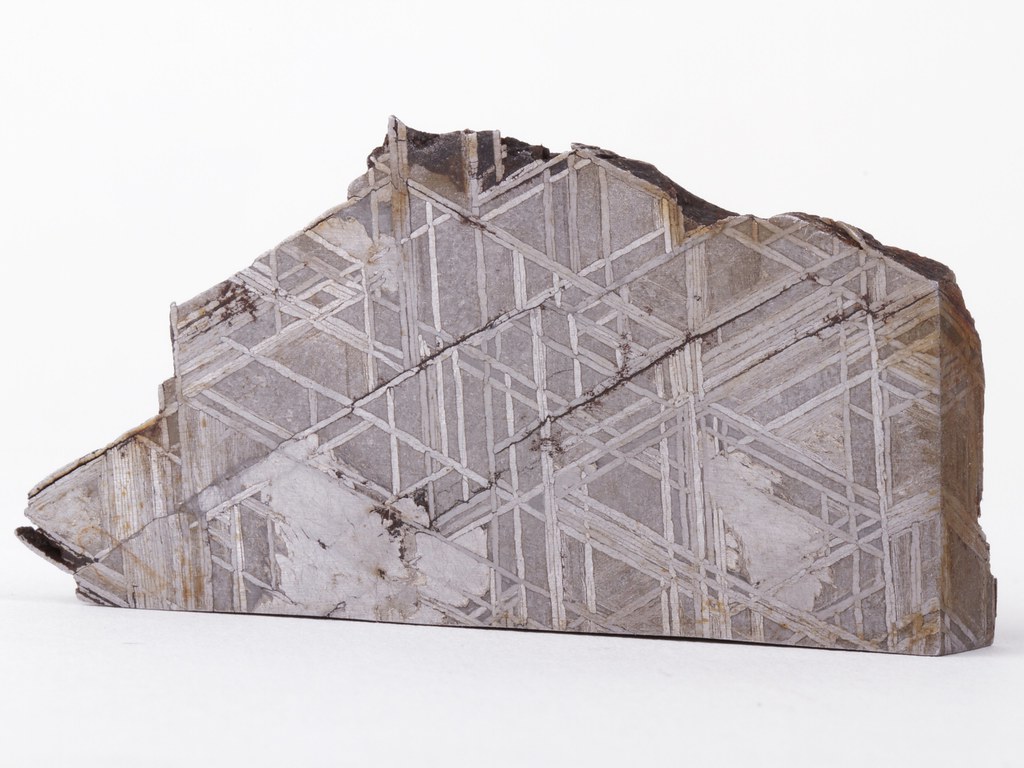
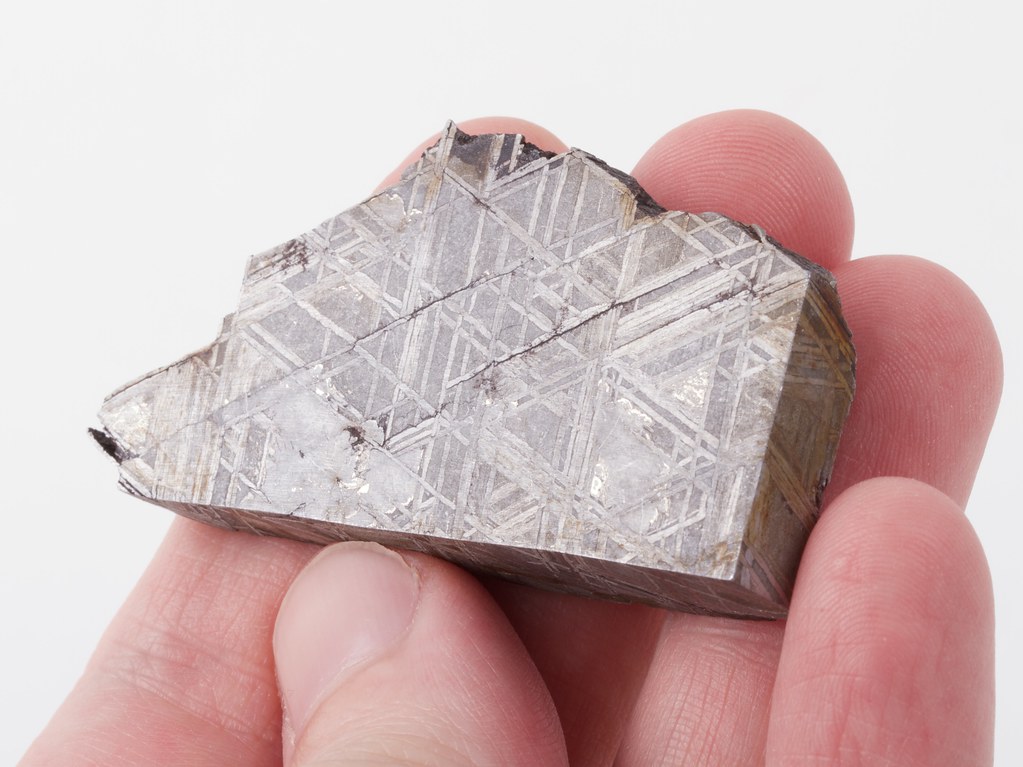
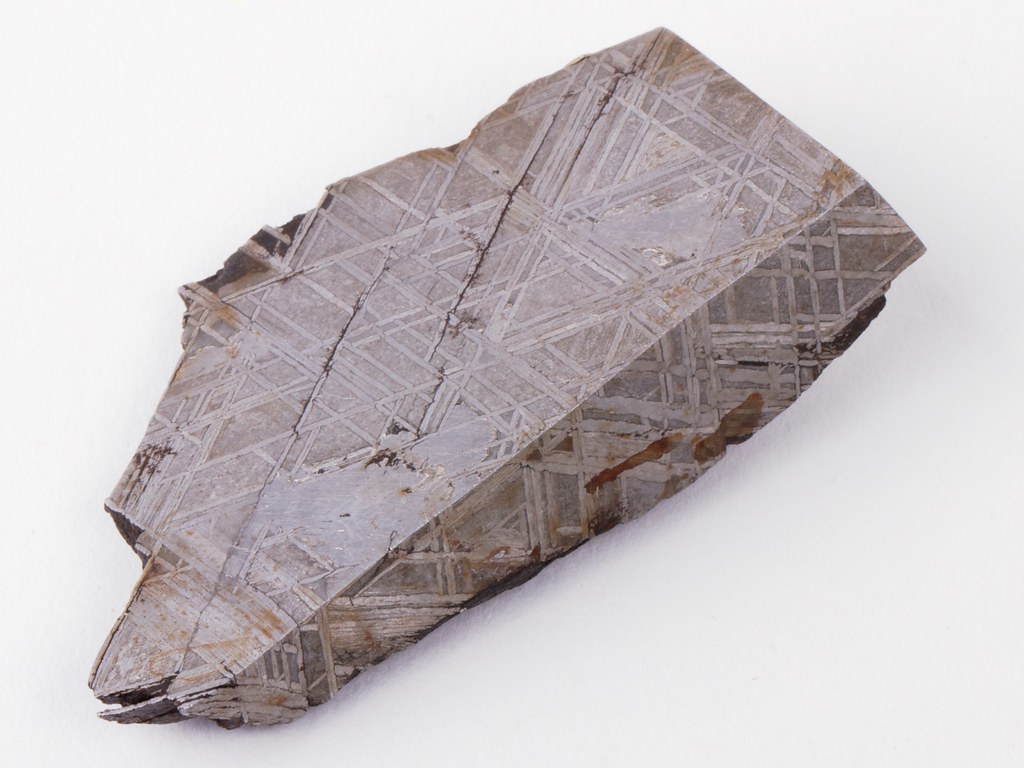
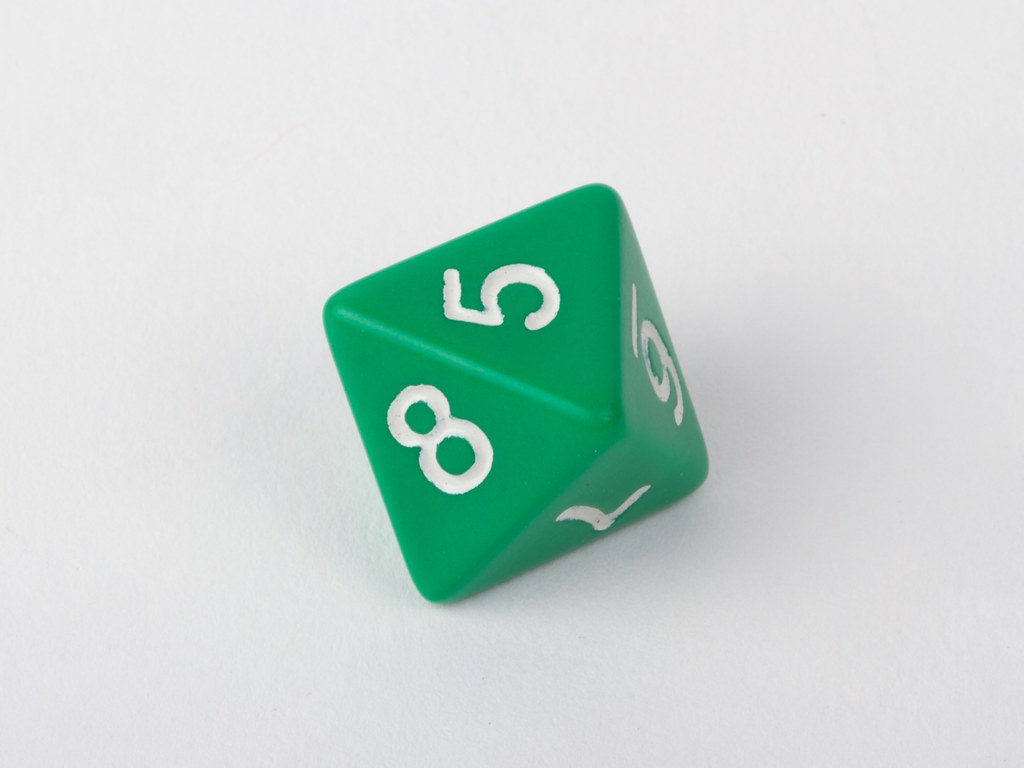
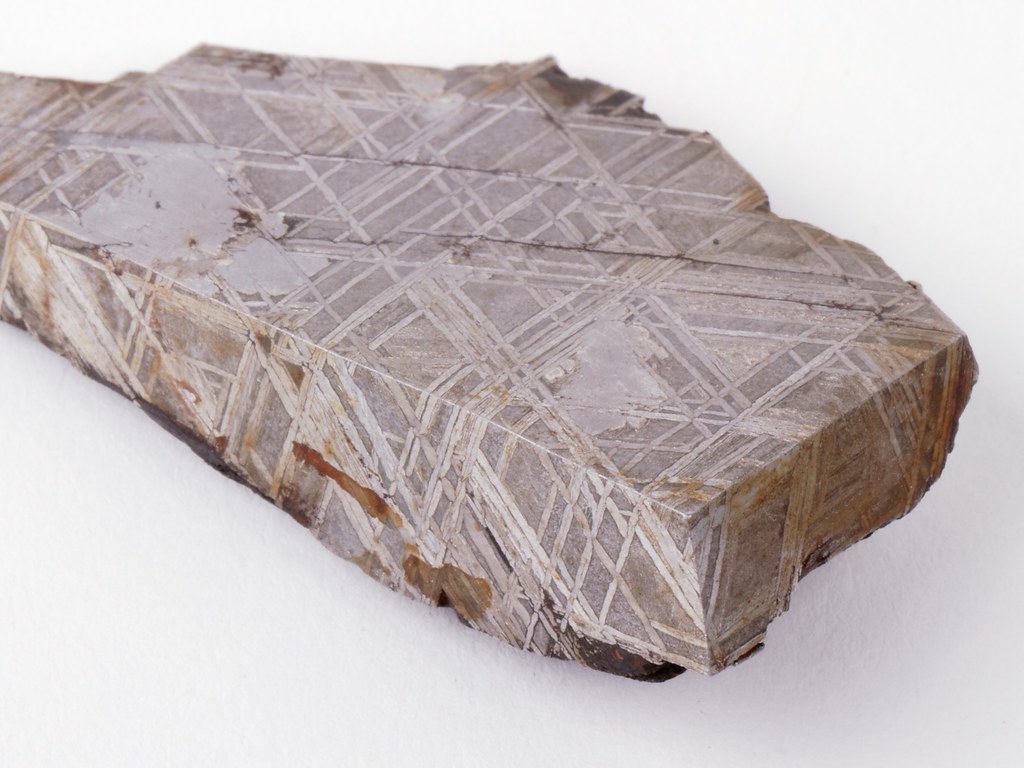
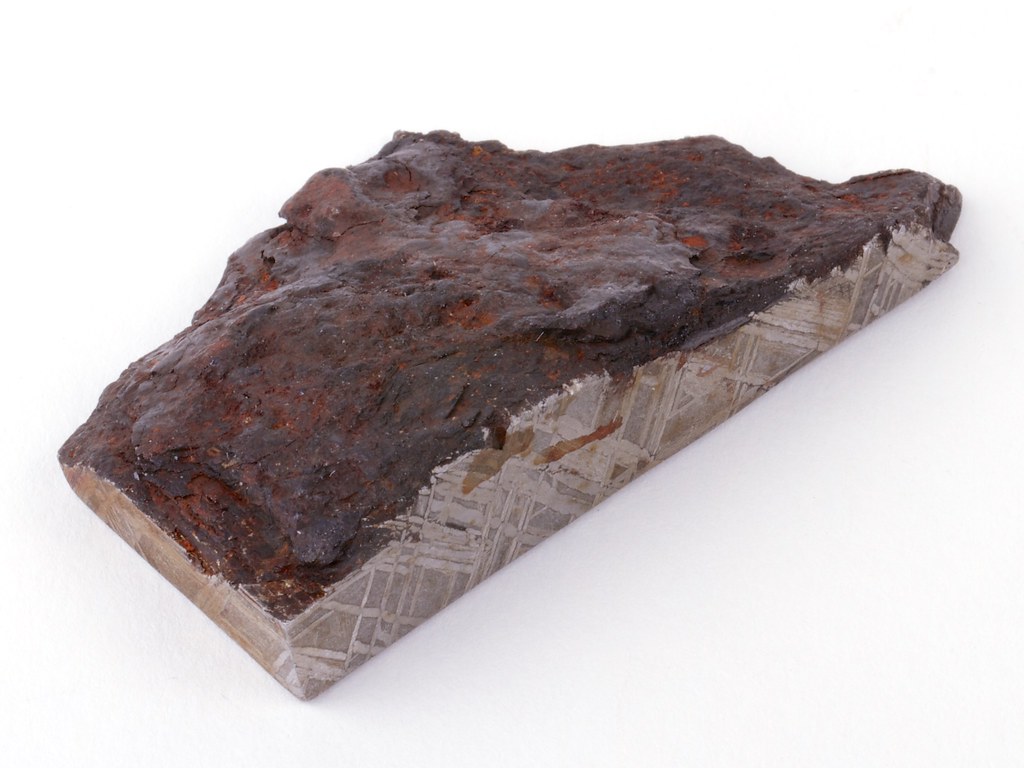
It looks just like the Andromeda Strain! http://3.bp.blogspot.com/-aSiP7iVVC7Y/UZFv75eQiuI/AAAAAAAAKDY/6-T9AEPRfu8/s1600/andromeda2.jpg
That’s apt in so many ways. I wonder how intentional it was!
Really cool looking and fascinating article and meteorite. I had never imagined a cooling rate that incredibly slow!
How heavy is the specimen you have? I feel like I need to get a piece now…
This sample is about 68 g. Heavy enough to get the heft, and small enough to not cost too large of a fortune. ;)
Wow, amazing! Thanks for “publicizing” this. A few specimens are on their way to me. They’ll be a nice adjunct to all my crazy mineral spheres, fossils, etc :-)
Oh, how prices have changed with time. As a teen I brought a fist-sized {one Kg?) meteorite from the Meteor Crater Near Holbrook, AZ for $15.00. When I was short on cash in College I was offered a dollar a gram at the CSM mineral museum. “Commonest kind there is” the curator said. I kept it.